Engage the car in first gear (move the automatic transmission selector to the "P" position) and chock the front wheels.
Prepare the car for work.
Raise the rear of the car and remove the corresponding wheel.
The rear brake pads must be replaced as a set on both sides.
Engage the car in first gear (move the automatic transmission selector to the "P" position) and chock the front wheels.
Raise the rear of the car and remove the corresponding wheel.
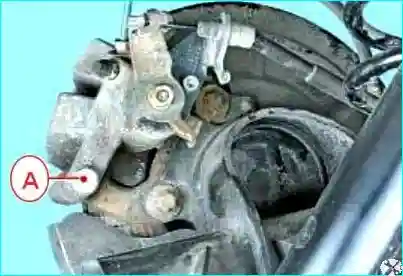
Holding the lower guide pin by the hex key, unscrew the "A" bolt securing the pin.

Lift the sliding caliper upward.
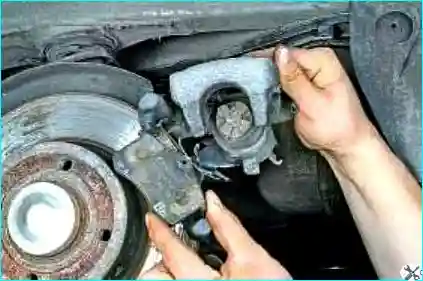
Removing the outer brake pad from the brake shoe guide
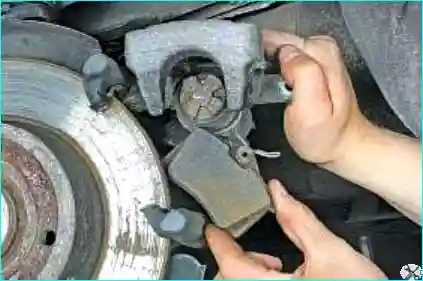
Removing the inner brake pad
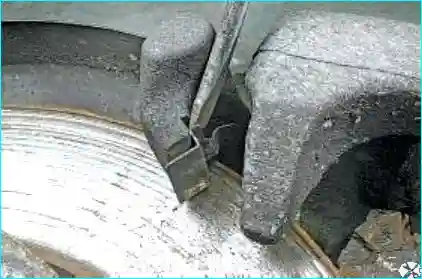
Removing the upper retaining spring from the brake shoe guide.

Removing the lower retaining spring.

Check the condition of the guide pin mud boots.
Check the ease of movement of the sliding caliper relative to the brake pad guide.

Lubricate the guide pins and their boots with grease.
Depress the piston of the working cylinder brake mechanism by screwing the piston clockwise, using a suitable tool.
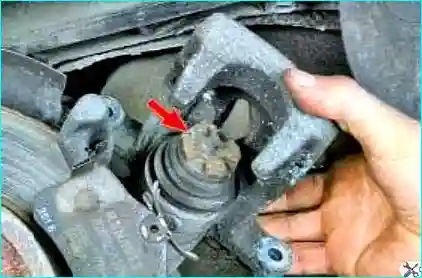
For ease of rotation, special grooves are made in the piston of the brake mechanism working cylinder.
Install the brake pads and all components in reverse order.
Check and, if necessary, top up the brake fluid in the brake master cylinder reservoir.
Removing and installing the caliper assembly with the rear wheel pad guide
Prepare the car as follows As stated above.
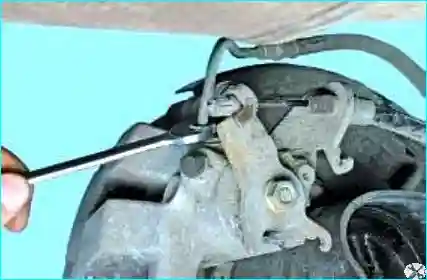
Unscrew the rear wheel slave cylinder line nut.
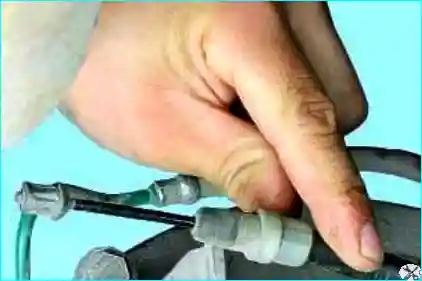
Remove the parking brake cable end from the release lever.
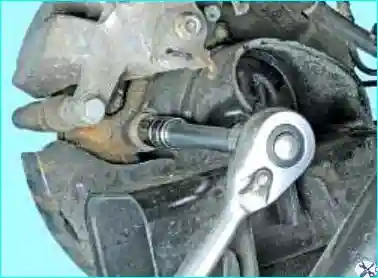
Remove the lower brake caliper guide mounting bolt.
Remove the upper brake caliper guide mounting bolt.
Remove the brake caliper assembly from the brake caliper guide.
Reinstall all parts in reverse order.
After installation, bleed the brake system.





